

Discover more from Easy By Nature
Life on the Edge: The Remarkable Black-capped Chickadee
A cheerful little marvel with much to teach us
The reassuring calls of the Black-capped Chickadee provide a counterpoint to the cold gray countenance of winter. Their pure whistled notes signal the presence of a boisterous and remarkably adaptive bird starting another day of life on the edge. When chickadees come to a bird feeder you know it. They are in perpetual motion, and they are constantly talking. Their bodies tremble and shake as they sing. Regardless of the weather, their indefatigable nature shines through and is uplifting.
Chickadees emanate a contagious moxy, verve, and curiosity. These traits are part of a suite of adaptations that help chickadees survive in conditions that most birds fly south to avoid. One of the benefits of a bird-friendly yard is the constant presence of Black-capped Chickadees and the chance to enter into their world.
These bold little birds add energy to the landscape. Henry David Thoreau noticed the power of chickadees to raise our spirits.
“The fields are bleak, and they are, as it were, vacated. The very earth is like a house shut up for winter, and I go knocking about it in vain. But just then I heard a chickadee on a hemlock and was inexpressibly cheered to find that an old acquaintance was yet stirring about the premises, and was, I was assured, to be there all winter. All that is evergreen within me revived at once.”
The book The Black-capped Chickadee Behavioral Ecology and Natural History is a real page-turner (if you like tables about the occurrence of the twelve most common chickadee gargle types at one particular feeder in different years!). In it, Susan M. Smith recounts the lessons she learned in decades of studying Black-capped Chickadees. She marvels at the intelligence and adaptability of chickadees and says that the more she studies them, the more interesting they get. This, I think, highlights an important lesson for birdwatchers. The more you can slow down and get to know a bird, the more interesting they become.
Chickadees are a perfect bird to get to know. They readily visit feeders during the winter and are just as curious about us as everything else they encounter. If your yard produces enough caterpillars and you have suitable nesting cavities, they will likely nest and raise young. This gives you an opportunity to observe their behavior and family life. There is much intrigue in the world of chickadees, including fights, extra-pair copulations, divorce, wandering, territorial disputes, and manipulation.
This time of year, we are coming to the end of the winter flock period and entering into spring, when the chickadees will break up into pairs and form breeding territories. Chickadees have a linear dominance hierarchy, and the oldest, dominant birds get the best habitat. For chickadees, the best habitat includes areas with mature trees and a lot of tree cover. Young birds are forced into marginal areas, which often causes them to wander in search of mates and more suitable habitat. As a result, the chickadees that you see in your yard are a constantly shifting cast of characters.
Chickadees prefer to excavate natural cavities in trees for nest sites, but they may use nest boxes if they are partially filled with sawdust. The Nest Watch Program at Cornell has building plans for several different types of chickadee birdhouses. Female chickadees choose nest sites and do most of the work of creating the nest. The rise of female biologists has led to increasing awareness of the roles that female birds play. It turns out that they are often in charge. They are dominant over males during the nesting period, and they choose whom to copulate with. They frequently pursue extra-pair copulations with males that are dominant over their mates.
The wing quiver display that men labeled as “begging behavior” is being reconsidered and labeled as a “demand display.” This is when a female perches next to her mate and quivers her wings to prompt the male to feed her during the stressful incubation and nestling period. During this time, she needs to consume 40% more calories to meet the heavy energetic demands required to keep eggs and nestlings warm during cold weather.
She lays 4-7 small, thin-shelled eggs that she incubates for 12 days. When the young hatch, they weigh one gram and are completely helpless. Their eyes are closed, and they are naked. She must keep them warm for another twelve days before their eyes open and they grow out enough feathers to regulate their temperature.
The nestlings are demanding. They grow incredibly fast while simultaneously developing feathers. This requires a lot of energy, and the parents respond by delivering a constant supply of caterpillars, spiders, and other insects. 90% of their food in summer consists of insects. Both parents deliver insects to the nest every couple of minutes from 6 a.m. until 8 p.m. for 18 days. That is 350-570 caterpillars per day and that adds up to 6,000-9,000 caterpillars to raise a brood of chickadees. This is where native plants come in. You need to have a good selection of native plants to produce enough caterpillars for the chickadees to feed their young.
When the young leave the nest, the parents continue feeding them until the young disperse into the surrounding area in mid-summer. At this point, the heroic parents undergo another taxing period. They grow a completely new set of feathers. Chickadees have around 2,500 feathers, which is more than most other birds of their size.
As temperatures drop in the fall, chickadees fluff up their feathers to increase their insulation from the cold. They also eat half of their body weight in food per day. In winter this consists of 50% plant and 50% animal foods. On cold winter nights, they go into controlled hypothermia or torpor, where they drop their body temperature as a way to conserve energy.
When they emerge in the morning, they have lost 10% of their body weight, and they use their enhanced hippocampus to recall the locations of thousands of seeds that they have stored across their territory. This strategy helps them even out the food shortages that can develop during winter.
Aldo Leopold noticed the intelligence and adaptability of chickadees when he was out cutting firewood in his woods in Wisconsin.
“A flock of a dozen chickadees spends the year in my woods. In winter, when we are harvesting diseased or dead trees for our fuel wood, the ring of the axe is a dinner gong for the chickadee tribe. They hang in the offing, waiting for the tree to fall, offering pert commentary on the slowness of our labor. When the tree, at last, is down, and the wedges begin to open up its contents, the chickadees draw up their white napkins and fall to. Every slab of dead bark is, to them, a treasury of eggs, larvae, and cocoons. For them, every ant-tunneled heartwood bulges with milk and honey. We often stand a fresh split against a nearby tree just to see the greedy chicks mop up the ant eggs. It lightens our labor to know that they, as well as we, derive aid and comfort from the fragrant riches of newly split oak.
But for diseases and insect pests, there would likely be no food in these trees, and hence no chickadees to add cheer to my woods in winter.”
The life of a chickadee is rich, complex, and thoughtful. Much of their life is beyond our understanding, and therein lies the magic. They are guided by curiosity, live with integrity, and always fully inhabit the moment. We have much to learn from the humble chickadee.

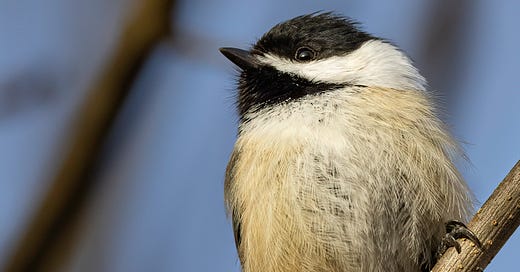




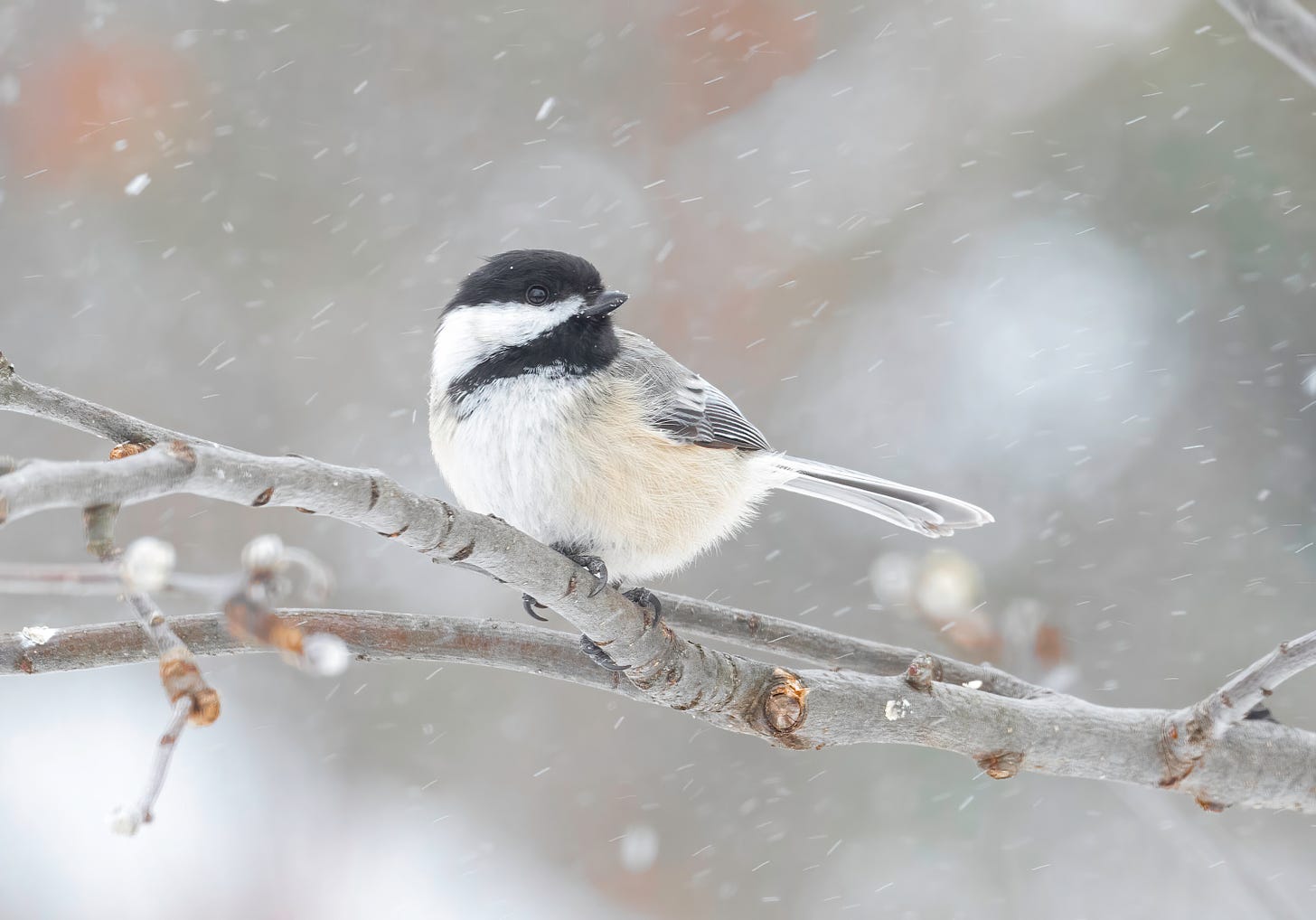
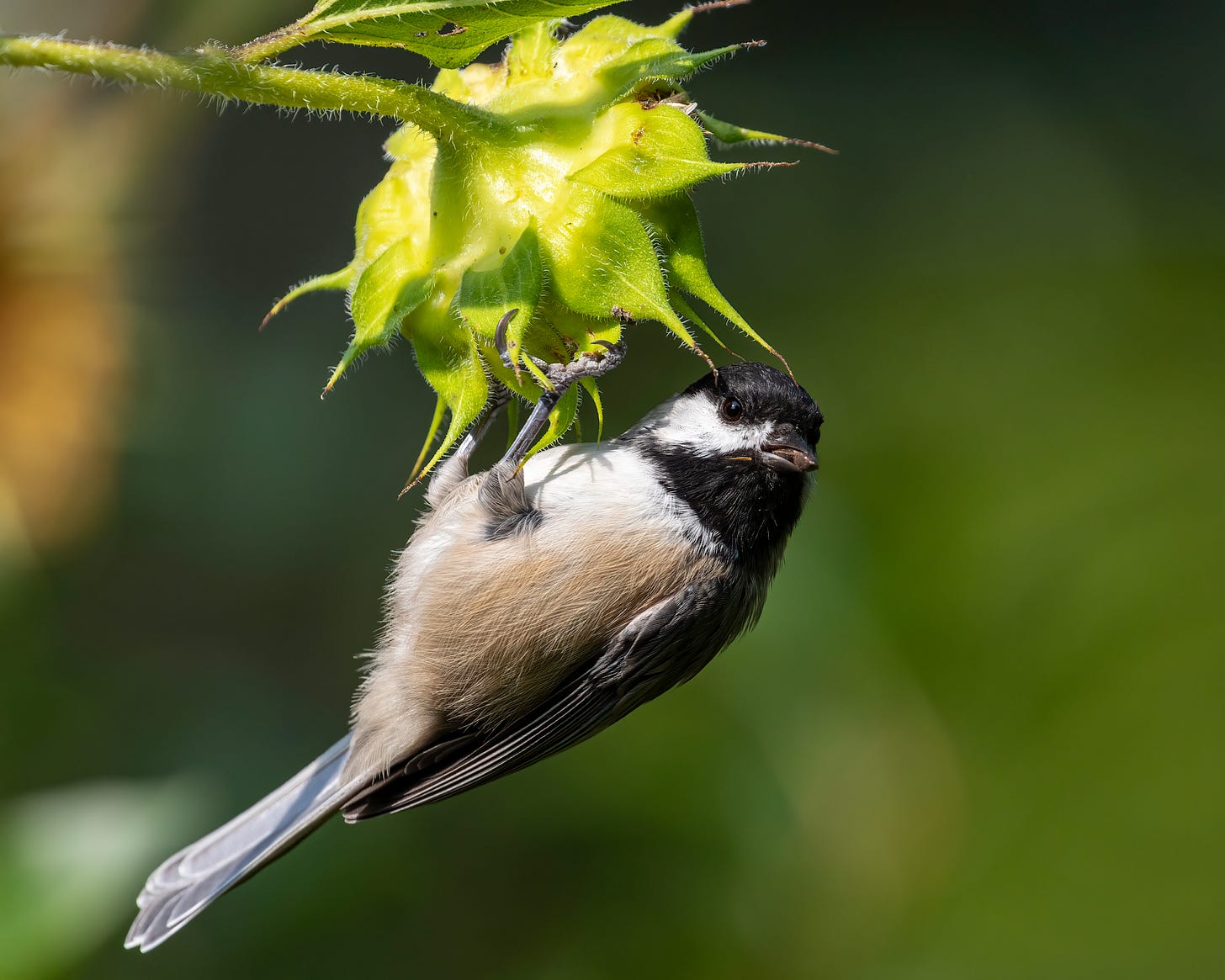




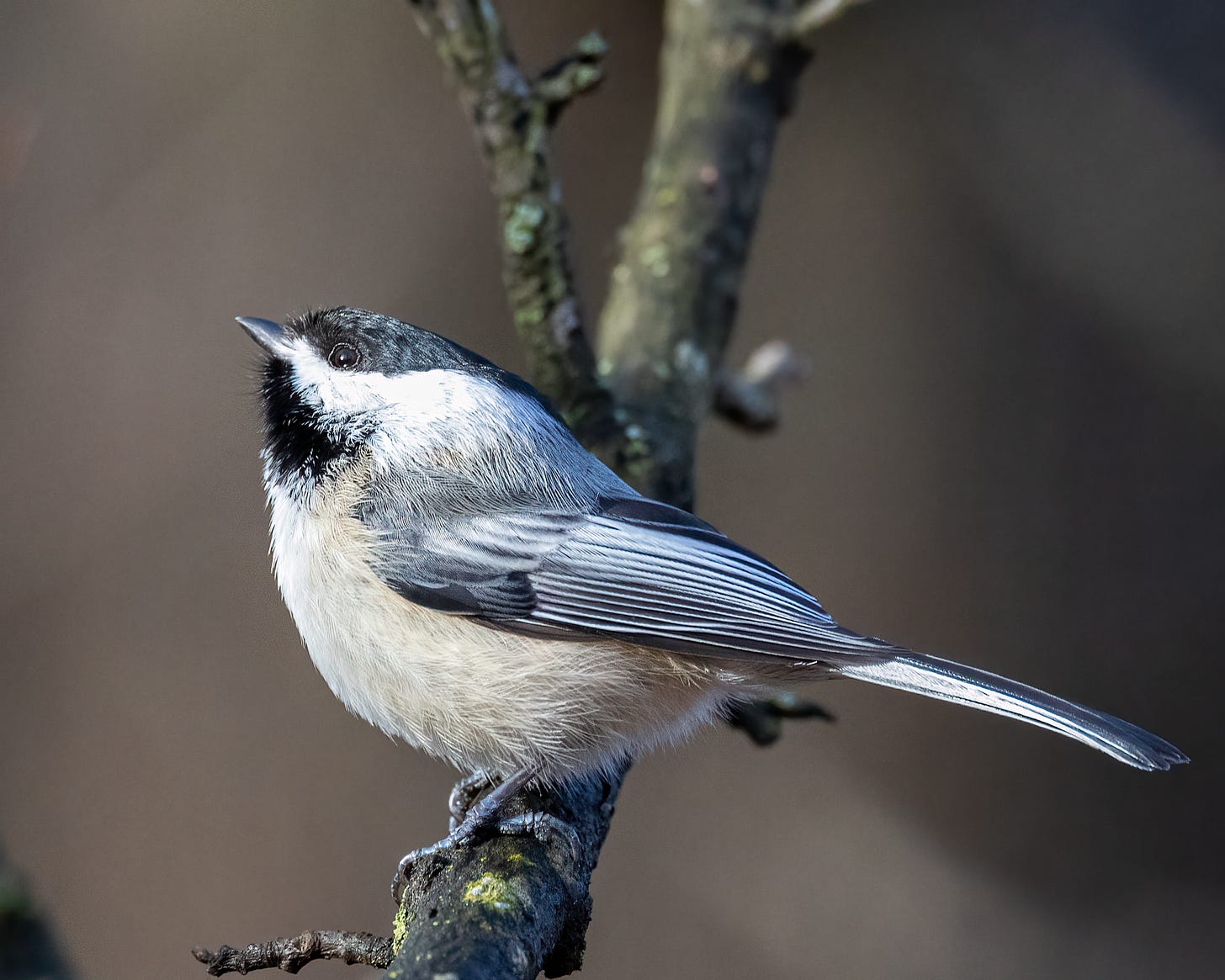





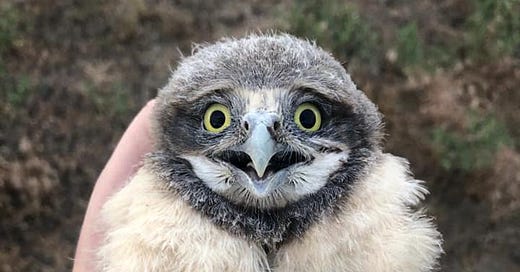


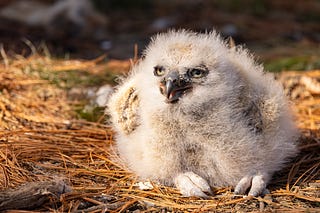


Great information! I will watch theses little birds with a lot more appreciation.
Wonderful addition to my appreciation of chickadees, Bill. Thanks for this. And your photos are really, really great.